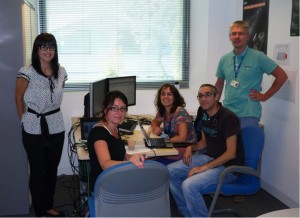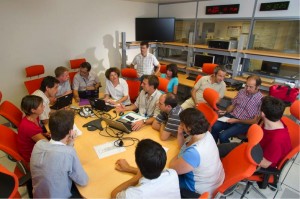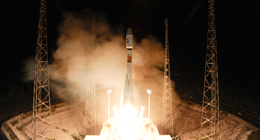Once Gaia is flying it will send a daily stream of scientific data to Earth. The Missions Operations Centre receive this and transfer it to the Science Operations Centre in the European Space Astronomy Centre (ESAC), the ESA establishment near Madrid in Spain. At ESAC, “Initial Data Treatment” is carried out as well as running the First Look software to assess the instrument health. The processed data is then sent to the other data processing centres around Europe (Barcelona, Cambridge, Geneva, Turin and Toulouse). A group of payload experts also look at this data to confirm the performance of the instrument. Depending on what the payload experts find, small changes or calibration procedures may need to be executed on Gaia. Such requests are sent to the Mission Operations Centre by the Science Operations Centre.
This is a rather simplified idea of what happens on a daily basis in the science ground segment. It involves a great number (>50) of people in at least seven countries and a lot of software (some millions of lines of code). To help understand how this will all work in practice and help train all the personnel involved we have held several operations rehearsals.
In an operations rehearsal we simulate several days (about 10 usually) of data and simulate its arrival from MOC at the times and rates and in the order that it should arrive in the actual mission. Operations rehearsal 4 (OR4) covered some days of commissioning with instrument health analysis by the payload experts followed by the switch to 4 days of nominal mission data. This was all played out between August 28 and September 6.
This was a very good exercise showing that we have capable teams in all the data processing centres with procedures for dealing with the data and contingency situations.
This entry (including images) was submitted by guest blogger William O’Mullane.




Discussion: no comments